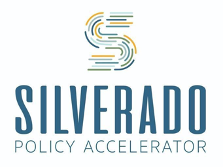
Mahnaz Khan, Andrew David, David Kelm, and Sarah Stewart • Sep 24, 2024
Strategic Defense Critical MineralsStrategic Defense Critical Minerals: A Targeted List for National and Economic Security
Silverado Testifies at USITC Hearing on GHG Emissions in Steel and Aluminum Sectors

Table of contents
No headers found in content
Author
Andy David
Silverado Policy Accelerator
Subscribe to our newsletter
Subscribe
November 29, 2023
Re: Greenhouse Gas Emissions Intensities of the U.S. Steel and Aluminum Industries at the Product Level, Investigation No. 332–598
Oral Hearing Statement of Andrew David, Vice President of Research and Analysis
Thank you for the opportunity to testify today in the U.S. International Trade Commission’s investigation on greenhouse gas emission intensities. The Commission’s investigation is timely given the domestic and international deliberations taking place over how to measure the embedded carbon in traded goods. Given that the Commission’s work may lay a blueprint for the development of policy measures in the United States and beyond, it is imperative that the scope of the investigation and resulting findings are transparent, replicable, and ultimately interoperable. My comments elaborate on these points and offer recommendations for the Commission’s work.
First, a brief overview of Silverado Policy Accelerator. Silverado is a 501(c)(3) non-profit organization that works to promote U.S. and allied competitiveness and economic prosperity by advancing bipartisan economic, strategic, and technological policy solutions in three interconnected areas: cybersecurity, international trade and industrial security, and the intersection of ecological and economic security. Silverado uses a novel accelerator model that combines the expertise of a traditional think tank with the dynamism of a venture approach. The three stages of our accelerator model—Cultivating, Incubating, and Accelerating—are designed to transform fresh policy ideas into actionable policy initiatives, nurturing a new strategic and economic vision from the ground up.
Silverado has done extensive work identifying approaches to data modeling for interoperable carbon accounting, as detailed in our prehearing brief, and examining the policy approaches for border carbon measures. There are a number of different policy approaches that create distinct incentives to decarbonize for various purposes. Some examples include voluntary corporate reporting, investor reporting, environmental product declarations, emissions trading systems, and carbon border measures like the EU CBAM. To maximize the emissions reductions and the administrability of this array of domestic and international policies, we need a path that creates interoperability of these various measures related to the specific purpose of decarbonization of traded goods. Incentivizing trade in goods with lower embedded GHGs is best done with a focus on product level treatment, GHG accounting by point of production, emissions assignment based on the national average for each product, and implementation at the border tied to the Harmonized System. GHG accounting systems should be transparent, interoperable, and replicable across products, sectors, and countries. Further, trade requires emissions accounting for products — not for facilities or firms — so that emissions values can be aligned with existing border taxation infrastructure, namely the Harmonized System, and taxes can be assigned and collected.
In regard to the Commission’s investigation, we have seven main recommendations. Additional more detailed comments on the questionnaire are included in our prehearing brief.
First, we think that it is imperative that the USITC use a transparent and high-quality methodology to set the standard for how such emissions can be estimated in the future. At the same time, we encourage the Commission to use a methodology that will be replicable by other U.S. government agencies and other trading partner countries in future work on carbon border measures. Therefore, we encourage the Commission to rely on public data to the extent possible and only collect questionnaire data where publicly available data is insufficient for the purposes of producing high-quality estimates of emissions.
Second, the Commission’s report will be the most comprehensive study to date on emissions associated with U.S. steel and aluminum production. The estimates in the report will, however, still involve assumptions and the extrapolation of results to non-responding firms. We therefore recommend that the Commission examine and publish information on the extent to which results would change if alternative assumptions were used.
Third, we think that it is important that the Commission publish—as part of its final methodology—information on any key data gaps for which additional U.S. government data collection is needed or for which new or enhanced modeling approaches need to be developed to improve estimates of industry-specific emissions intensities. As the United States looks to develop a carbon border measure, it is critical to identify additional data and/or data modeling tools that will be needed to develop robust, fair, and accurate measures of carbon intensity.
Fourth, we encourage the Commission to provide estimates for as many of the products as possible in attachment B of USTR’s request letter. As the U.S. considers developing carbon border measures, and the EU CBAM, the UK CBAM, and other countries’ new measures are applied to U.S. exports, it is important to understand the emissions associated with individual products that may be subject to carbon border measures. For example, attachment A only includes a few broad categories of steel products, while most potential border carbon measures would be implemented at a more detailed product level. Similarly, providing a single estimate for unwrought aluminum products would be of limited value in understanding the impact of a carbon border measure given the different emissions intensities of goods at the HS 6-digit level.
Fifth, we recommend that the Commission develop approaches to estimating emissions where confidentiality may be an issue. For example, we think that it is critical that the USITC produce separate emissions estimates for the attachment B products for unwrought not alloyed aluminum and unwrought alloyed aluminum. However, there are a small number of firms that produce most unwrought not alloyed aluminum in the United States. With publicly available data, it should be possible to produce emissions estimates for primary aluminum even if confidentiality issues emerge due to the response rate or share of production accounted for by the largest firms. Similar issues may arise for any data is primarily from integrated steel mills. We would encourage the Commission to use other approaches to estimating carbon intensity even where confidentiality becomes an issue.
Sixth, the methodology indicates that the estimates will use a source-specific emissions factor for many scope 3 inputs. We encourage the Commission to also publish the methodology for how these emissions factors will be derived to provide transparency and allow for public comment. The emissions factors used in this analysis will have a significant impact on the carbon footprint of some downstream products. For example, imports of unwrought aluminum are a significant input to U.S. wrought aluminum production and will have a substantial impact on the greenhouse gas emissions embedded in wrought products. Therefore, it is very important to provide transparency on how these emissions are calculated.
Finally, we suggest that the Commission revise the system boundaries to ensure that it is a true cradle to gate approach that captures early stages of production that are currently excluded from the Commission’s questionnaire. It is not clear why bauxite, iron ore, coal tar pitch, and calcined petroleum coke are excluded from the system boundaries. We would suggest including these products in the system boundaries for the investigation.
Explore more insights and analysis from our research team.

Mahnaz Khan, Andrew David, David Kelm, and Sarah Stewart • Sep 24, 2024
Strategic Defense Critical MineralsStrategic Defense Critical Minerals: A Targeted List for National and Economic Security

Silverado Policy Accelerator • Apr 22, 2021
WITA’s “Trading For Good” PanelWhat are the benefits of an environmental goods agreement, and how can we get there?

Silverado Policy Accelerator • Dec 04, 2023
Technical Note: Scorecard for Border Carbon/Border Pollution Measures (BCMs/BPMs)Outlines policy objectives of border carbon/pollution measures and provides a scorecard framework for evaluation of policy effectiveness and risk management.